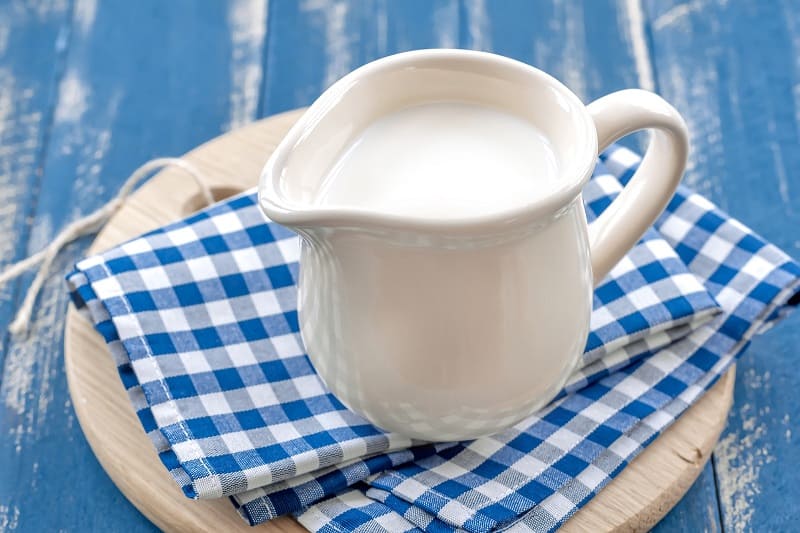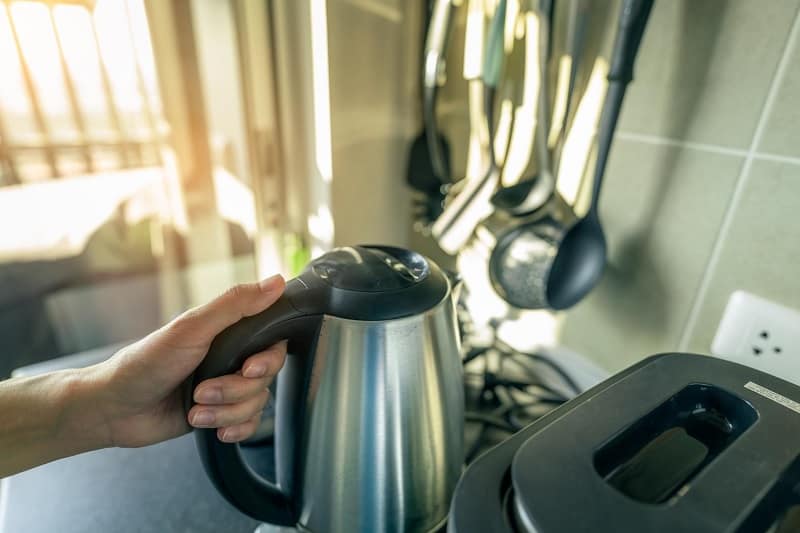It is possible to heat milk using a conventional electric kettle. However, your health (and kettle) may be at risk of damage if you use a kettle to heat milk or liquids other than water.
Generally, milk needs to be heated slowly at a low temperature. This prevents it from scalding and ensures the flavor and integrity of the milk is kept intact.
Gentle heating in a saucepan or microwaving at low power is often the best way to achieve this. However, these options aren’t always available.
In a pinch, some kettles could be used to heat up more than just water. For example, kettles are often used in prisons to cook (and serve) soups and noodles, as alternative cooking methods aren’t readily available.
When using a kettle, always follow the manufacturer’s instructions. Failing to do so may void your warranty or cause an accident.

Using an Electric Kettle to Heat Milk
Most electric kettles are only designed solely to heat water. Milk does contain a fair amount of water but it has additional components including vitamins, minerals, proteins, fats and sugars.
Milk fats and proteins don’t evaporate into steam when heated. If milk is heated in a kettle, a sticky layer of protein and fat could form at the bottom.
As well as being difficult to clean, it could pose a risk to the user.
Electric kettles use a heating element, hidden at the base, to produce heat. This heat can become intense, and can cause the proteins and fats within milk to burn.
It may also cause the automatic heat shut-off sensor to malfunction. This crucial safety feature turns the kettle off once water has boiled. If this sensor becomes clogged with milk residues, it may cause the kettle to overheat or short-circuit.
This poses a fire hazard, which is why electric kettle manufacturers make it clear what should and shouldn’t be put in your appliance.
Using Stove-Top Kettles, Camping Kettles and Whistling Kettles to Heat Milk

Old-fashioned kettles which are heated on a gas hob, induction hob or AGA could be used to heat milk with considerably more success than an electric kettle.
These devices are essentially odd-shaped saucepans. The only difference is their design, including a pressure-release valve, a smaller handle and a contained shape, to keep steam from escaping.
Each of these kettles can, crucially, be cleaned in a sink with normal washing up liquid and water. This means that they can be safely and quickly cleaned after use.
Unlike electric kettles, there is no risk of an electrical fire occurring. The metal construction of these stove-top kettles will withstand high temperatures; they won’t melt or burn, even at higher-than-normal temperatures.

Chef’s Pick is your guide to the best kitchen equipment and appliances in the UK.
We help you understand the confusing world of cookers, ovens and cookware so you can get the most out of your kitchen.

